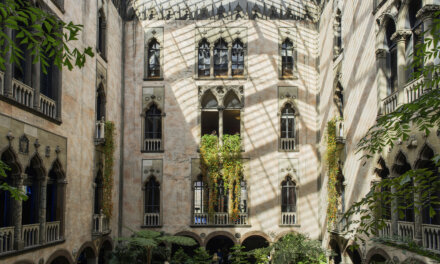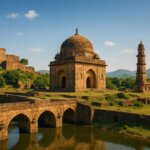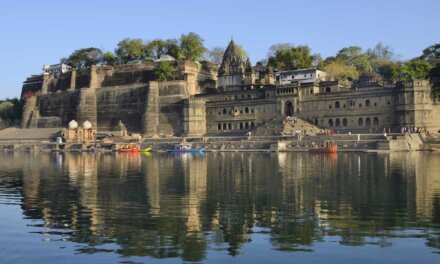
Harishchandragad Trek: Witnessing Nature’s Grandeur and Ancient Ruins

Introduction:
Nestled amidst the rough terrain of the Western Ghats, Harishchandragad is a testament to the majesty of nature and the remnants of past civilizations. In addition to providing amazing views of the Sahyadri range, this well-known trekking destination in Maharashtra’s Ahmednagar district also exposes the ruins of an old fort with a fascinating past. We take a virtual tour of the Harishchandragad trek with this all-inclusive guide, exploring its natural wonders, architectural marvels, and the spiritual aura that envelops this historic haven.
Harishchandragad: A Glimpse into History
1. Location and Accessibility:
Situated in the Malshej area of the Western Ghats, Harishchandragad is roughly ninety kilometers away from Kalyan in Maharashtra. The journey to the base village is an immersive experience, with winding roads offering glimpses of the stunning landscapes. The trek starts at the village of Pachnai.
2. Historical Significance:
The fort’s origins are thought to date to the sixth century, and it has a rich medieval history. Harishchandragad has lived through the reigns of several dynasties, such as the Marathas, Yadavas, and Mauryas. The fort’s ruins, which include temples and caverns, are evidence of these ancient societies’ mastery of architecture.
Preparing for the Harishchandragad Trek
1. Essential Gear:
Being well-prepared is essential before starting the Harishchandragad trek. Essential gear includes comfortable trekking shoes, weather-appropriate clothing, a backpack with essentials, water bottles, energy snacks, a first aid kit, and a trekking pole for added support.
2. Fitness Level:
Trekkers should be reasonably fit because the Harishchandragad trek is moderately difficult. Before the trek, regular walking or cardiovascular exercises can help increase endurance and stamina.
3. Ideal Time to Visit:
The post-monsoon months of September to November and the pre-monsoon months of February to May are the ideal times to complete the Harishchandragad trek. The weather is favorable during these times, with clear skies and comfortable temperatures.
Harishchandragad Trek: An Enchanting Journey
1. Pachnai to Harishchandragad Base:
Pachnai, a charming village encircled by hills and vegetation, is where the trek starts. Trekkers have an immersive experience with the sights and sounds of nature during the first ascent through dense forests. The Malshej region is viewed in its entirety as the trail progresses.
2. Konkan Kada:
The trek’s high point is Konkan Kada, a massive cliff that provides an incredible view of the Konkan region. Hikers frequently stop here to take in the majesty of the surroundings and photograph the amazing vista.
3. Harishchandragad Fort:
Trekkers are welcomed by historic ruins, including temples, caves, and bastions, as they arrive at the fort. Among the main draws of the Harishchandragad fort complex are the Rohidas Fort, Taramati Peak, and Konkan Kada.
4. Kedareshwar Cave:
Inside the fort, the Kedareshwar Cave is a spiritual sanctuary graced with a Shiva Linga. The naturally occurring Shiva Linga in the cave is well known; it was formed over centuries by water droplets that fell from the ceiling.
Architectural Marvels of Harishchandragad
1. Harishchandreshwar Temple:
The Lord Shiva-focused Harishchandreshwar Temple is a monument to historic building techniques. The elaborate sculptures and carvings inside the temple showcase the skill of the artisans who worked on building the fort.
2. Saptatirtha Pushkarni:
Harishchandragad is given a divine touch by the Saptatirtha Pushkarni, a temple tank with seven sacred ponds. It is believed by pilgrims that a dip in these holy waters purifies the soul.
3. Nageshwar Temple:
Lord Vishnu is the subject of the Nageshwar Temple, which is located inside the fort complex. The sculptures and architecture of the temple shed light on the historical religious customs.
Camping at Harishchandragad: A Night Under the Stars
1. Blissful Nightscapes:
A truly surreal experience, camping at Harishchandragad is best enjoyed on clear nights. Trekkers can see a celestial show; the Milky Way stretches across the night sky, thanks to the lack of city lights.
2. Accommodation Options:
Trekkers often camp, but there are also caves in the Harishchandragad fort complex that can be used as temporary shelters. Depending on their inclinations, hikers can choose to camp outside or take cover in the caves.
3. Bonfire Tales:
At Harishchandragad, campfires serve as a gathering place for hikers to exchange tales, insights, and companionship. A cozy atmosphere is created by the crackling flames in the refreshing mountain air.
Harishchandragad Wildlife: A Biodiversity Haven
1. Flora and Fauna:
A diverse array of plants and animals can be seen during the walk to Harishchandragad. The varied vegetation, which includes grasslands and evergreen forests, serves as a home for a wide range of plant species. Trekkers might encounter indigenous wildlife, including langurs, birds, and butterflies.
2. Conservation Efforts:
The biodiversity of the Harishchandragad area is being preserved. Trekkers are urged to adhere to the Leave No Trace philosophy to have the least possible negative environmental impact.
Challenges and Safety Measures
1. Treacherous Terrain:
Trekkers must use caution when traversing rocky terrain and steep ascents on some sections of the Harishchandragad trek. Trekking poles and appropriate footwear can improve stability on uneven terrain.
2. Weather Considerations:
In the Western Ghats, the weather can change suddenly. Trekkers should stay informed about the weather forecast, carry rain gear during monsoons, and be prepared for sudden temperature changes.
3. Guided Treks:
Choosing a guided walk for people who are not familiar with the trail can increase safety. Skilled guides are familiar with the area, the weather, and emergency protocols.
Harishchandragad Beyond Trekking: Local Culture and Cuisine
1. Villages En Route:
The villages on the way to Harishchandragad provide an insight into the way of life in the area. Trekkers frequently engage in conversation with locals, becoming fully immersed in the rich cultural legacy of the area.
2. Local Cuisine:
A crucial component of the Harishchandragad experience is sampling regional cuisine. Village communities offer traditional Maharashtrian dishes, providing trekkers with a taste of the region’s culinary delights.
Harishchandragad: A Spiritual Odyssey
1. Spiritual Significance:
For devotees, Harishchandragad has great spiritual significance. Pilgrims looking for a place of spiritual solace are drawn to the fort complex’s historic temples and holy locations.
2. Sunrise at Harishchandragad:
It is a spiritual experience to watch the sunrise from the fort’s vantage points. The surrounding peaks are illuminated by the morning sun’s golden hues, which produce a calm and ethereal atmosphere.
Preserving the Legacy: Conservation and Responsible Tourism
1. Conservation Initiatives:
Future generations depend on the ecological balance of Harishchandragad being preserved. Sustainable tourism practices, afforestation, and waste management are the main focuses of conservation initiatives.
2. Responsible Trekking:
It encourages trekkers to minimize their environmental impact to practice responsible trekking. This entails picking up all trash, not bothering wildlife, and honoring regional traditions and customs.
Conclusion: The Timeless Allure of Harishchandragad
To sum up, the Harishchandragad trek is a holistic experience that goes beyond simple physical effort. It is a tapestry woven together with the majesty of nature, the past, spiritual holiness, and the companionship of other hikers. There’s a tale to be found around every corner, from the untamed paths to the architectural wonders.
Trekking the Harishchandragad is a pilgrimage into the heart of the Western Ghats, not just an adventure. Trekkers experience an encounter that stays with them long after their journey is over as they reach the summit, where they see the harmonious collision of time, history, and environment. Harishchandragad is a monument to the mountains’ enduring charm, calling everyone who wishes to experience the harmony of old ruins and the magnificence of nature.
























